How do I get Windows 10 Terminal to launch WSL?
I\'m using the new Windows Terminal, and trying to get it to launch my WSL terminal. This is the setting that I\'m trying to use:
{
\"acrylic
-
I have developed a tool for tweaking the terminal configurations here :
Windows Terminal Tweaker讨论(0) -
You need to do following things first.
1. Install Linux (e.g. Ubuntu)
Search "Ubuntu" in the Microsoft store, then buy and install. This is actually WSL (Windows Subsystem for Linux).
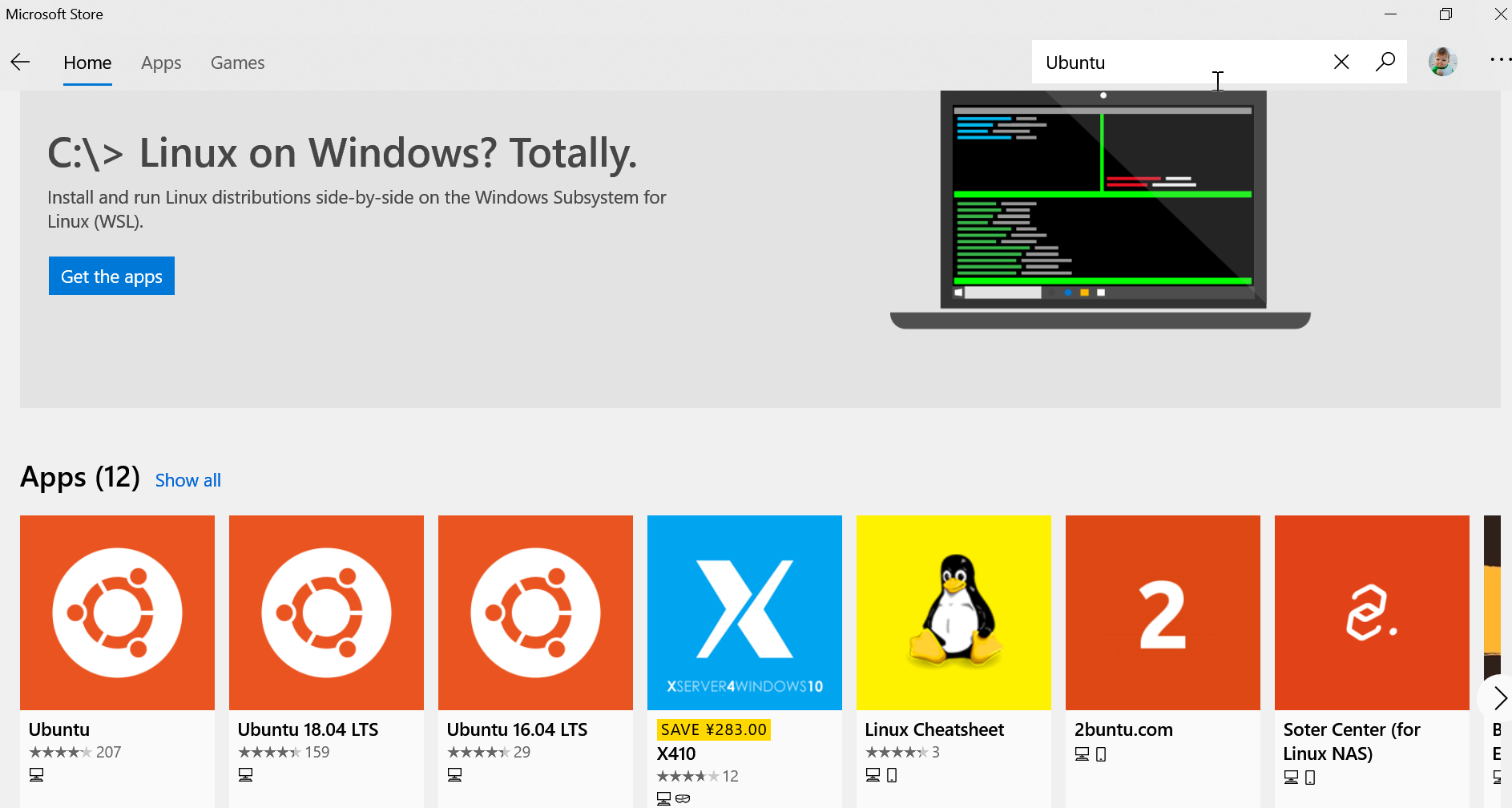
Of course, you want to experience other versions of Linux, as well as Debian:
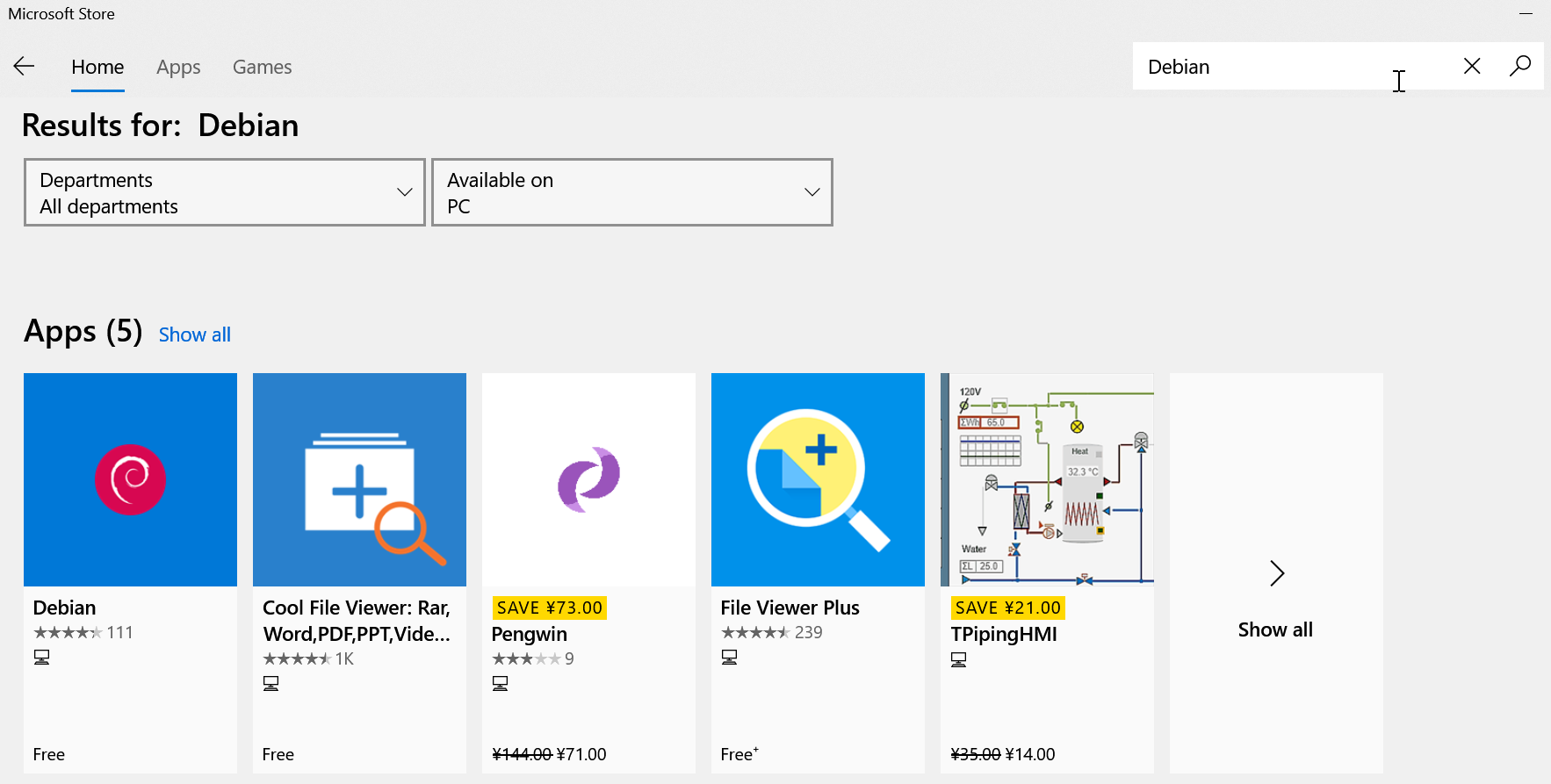
2. Enable WSL permissionsAfter installing the WSL version of Linux, you also need to enable WSL permissions:
Open another PowerShell window with "Run as Administrator".
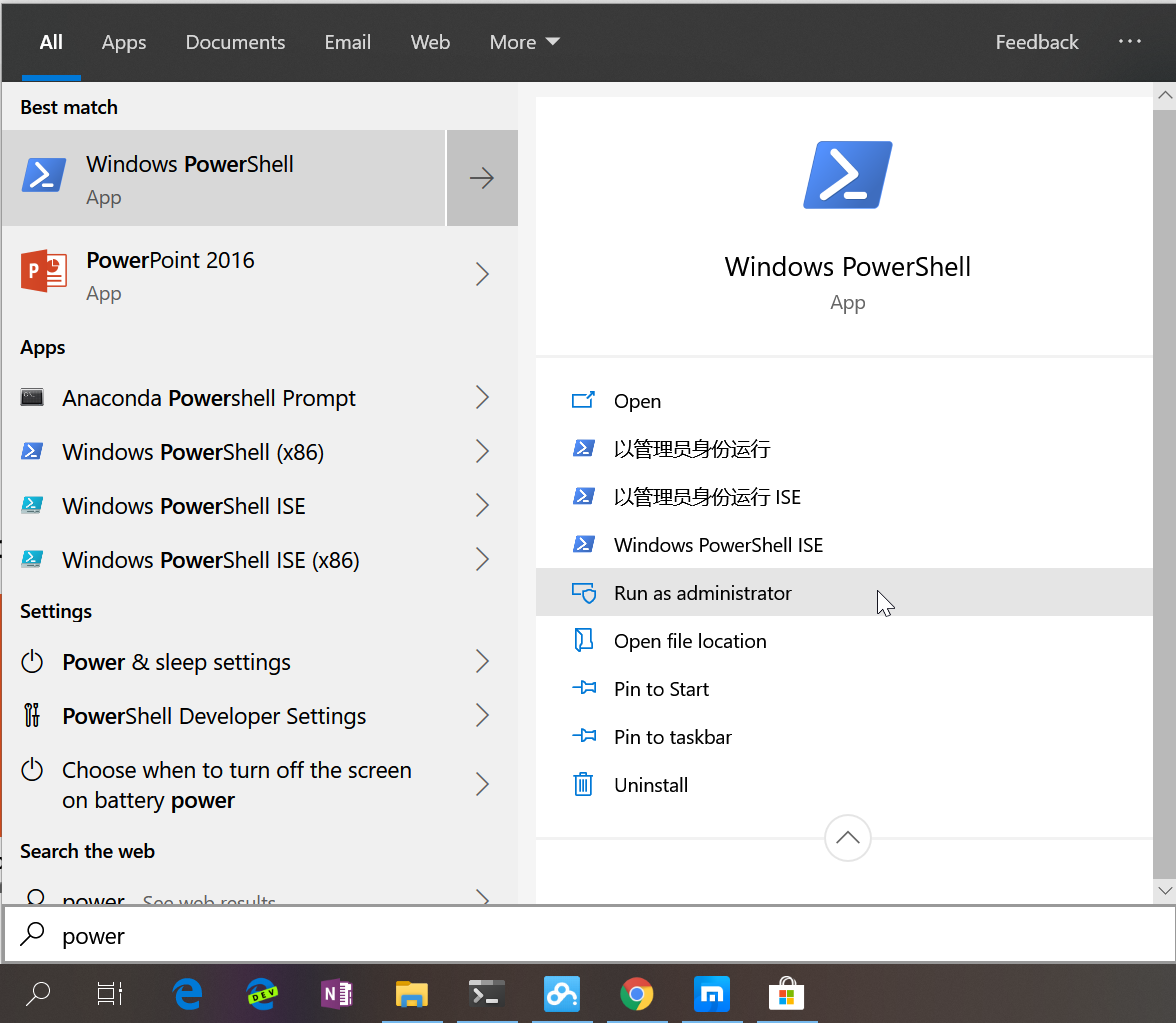
Then enter the following command:
Enable-WindowsOptionalFeature -Online -FeatureName Microsoft-Windows-Subsystem-Linux
After the command is completed, you can execute the Linux command in the built-out Terminal.
First enter
ubuntuin cmd, take a little time to start Ubuntu, set the username and password.Then you can play with Ubuntu happily. Below I entered a few common commands such as
ps,touch,lsetc., as shown below.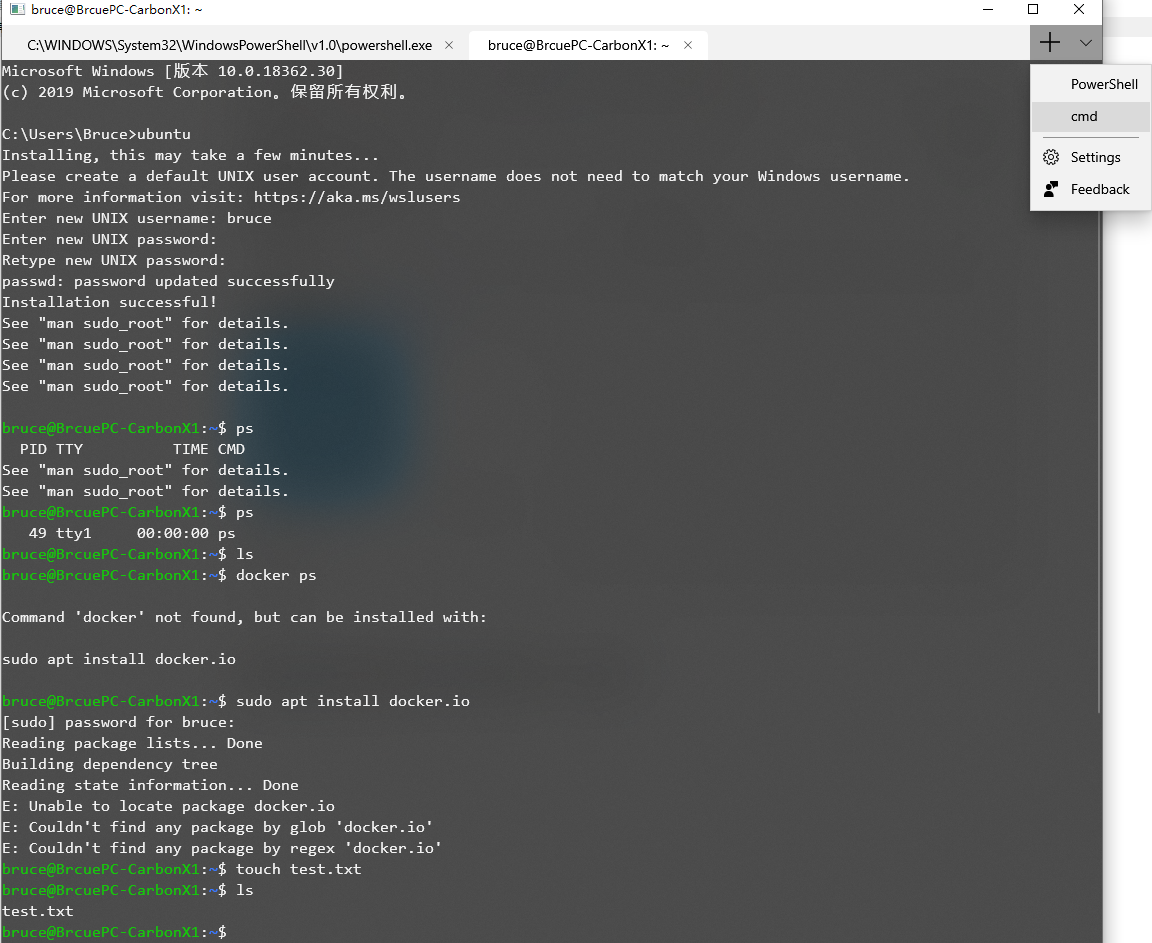
3. Change settingsClick "Settings" in right top corner of above image, the file
profile.jsonfile will be opened. Then inside the word"profiles"inprofile.jsonfile, add below snippet.{ "guid": "{78e390db-1bff-4533-9d7c-20f53d8bafa1}", "name": "WSL", "colorscheme": "Campbell", "historySize": 9001, "snapOnInput": true, "cursorColor": "#FFFFFF", "cursorShape": "bar", "commandline": "wsl ~", "fontFace": "Consolas", "fontSize": 12, "acrylicOpacity": 0.75, "useAcrylic": true, "closeOnExit": false, "padding": "0, 0, 0, 0" }Near the word
"schemes"inprofile.jsonfile, you need to update below:"schemes": [ { "name": "Campbell", "foreground": "#A7B191", "background": "#0C0C0C", "colors": [ "#0C0C0C", "#C50F1F", "#13A10E", "#C19C00", "#0037DA", "#881798", "#3A96DD", "#CCCCCC", "#767676", "#E74856", "#16C60C", "#F9F1A5", "#3B78FF", "#B4009E", "#61D6D6", "#F2F2F2" ] }The complete setting file (profile.json) which can be obtained here.
Actually, the WSL here is Ubuntu.
4. Add icons to different types of tabs
You can add icons for Tab to this location:
%LOCALAPPDATA%\packages\Microsoft.WindowsTerminal_8wekyb3d8bbwe\RoamingStateI put some 32x32 PNG in this folder, and then in
profile.jsonI can reference the image resource with the path starting withms-appdata://.The icon is available here: Icons
Then replace the contents of the new
profile-withIcons.jsonfile below with the previous settings. profile-withIcons.jsonAfter finishing the contents of the folder is like this:
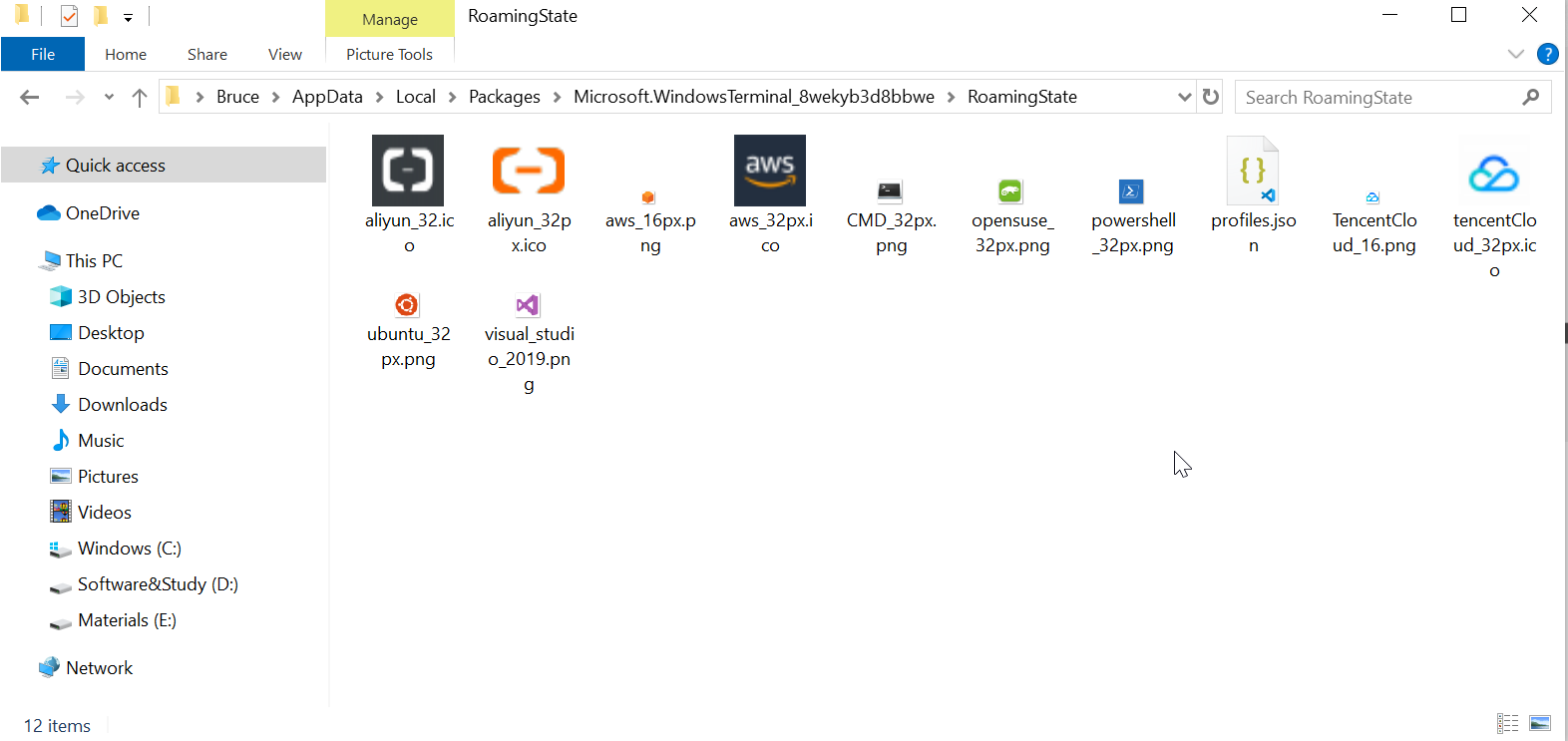
The final result is:
 讨论(0)
讨论(0) -
Turns out that all I needed to do was change the commandline to
ubuntu1804.exe. Like this:{ "acrylicOpacity" : 0.75, "closeOnExit" : true, "colorScheme" : "Campbell", "commandline": "ubuntu1804.exe", "cursorColor" : "#FFFFFF", "cursorShape" : "bar", "fontFace" : "Consolas", "fontSize" : 10, "guid" : "{0caa0dad-35be-5f56-a8ff-abceeeaa6101}", "historySize" : 9001, "icon" : "ms-appx:///ProfileIcons/{0caa0dad-35be-5f56-a8ff-afceeeaa6101}.png", "name" : "wsl", "padding" : "0, 0, 0, 0", "snapOnInput" : true, "startingDirectory" : "%USERPROFILE%", "useAcrylic" : false }讨论(0) -
Windows Terminal allows you to open the settings and change things there. If you already have ubuntu installed, it should be an option to set the ubuntu profile as your default config.
Copy paste the guid for ubuntu into the defaultProfile and it will automatically launch WSL ubuntu instead of powershell by default.
讨论(0) -
To launch any distribution, you can also use this for commandline:
wsl.exe -d <name_of_the_distribution>Like :
wsl.exe -d Ubuntu-18.04You can list all distributions with :
wsl.exe -l.
PS : Tux icon for Linux :
ms-appx:///ProfileIcons/{9acb9455-ca41-5af7-950f-6bca1bc9722f}.png讨论(0) -
While my answer is off-question (since answered by the O.P.) I found this question while searching for adding a Windows Terminal (WT) profile for my recent Ubuntu installation, since I had recently re-imaged my laptop.
Updated 19/10/03: Installation order does not matter. My profile for “ubuntu” appears after installing ubuntu, and then launching the ubuntu instance in PowerShell and establish my user account and password. THEN Windows Terminal adds the appropriate shell profile for WSL.
讨论(0)
- 热议问题

 加载中...
加载中...